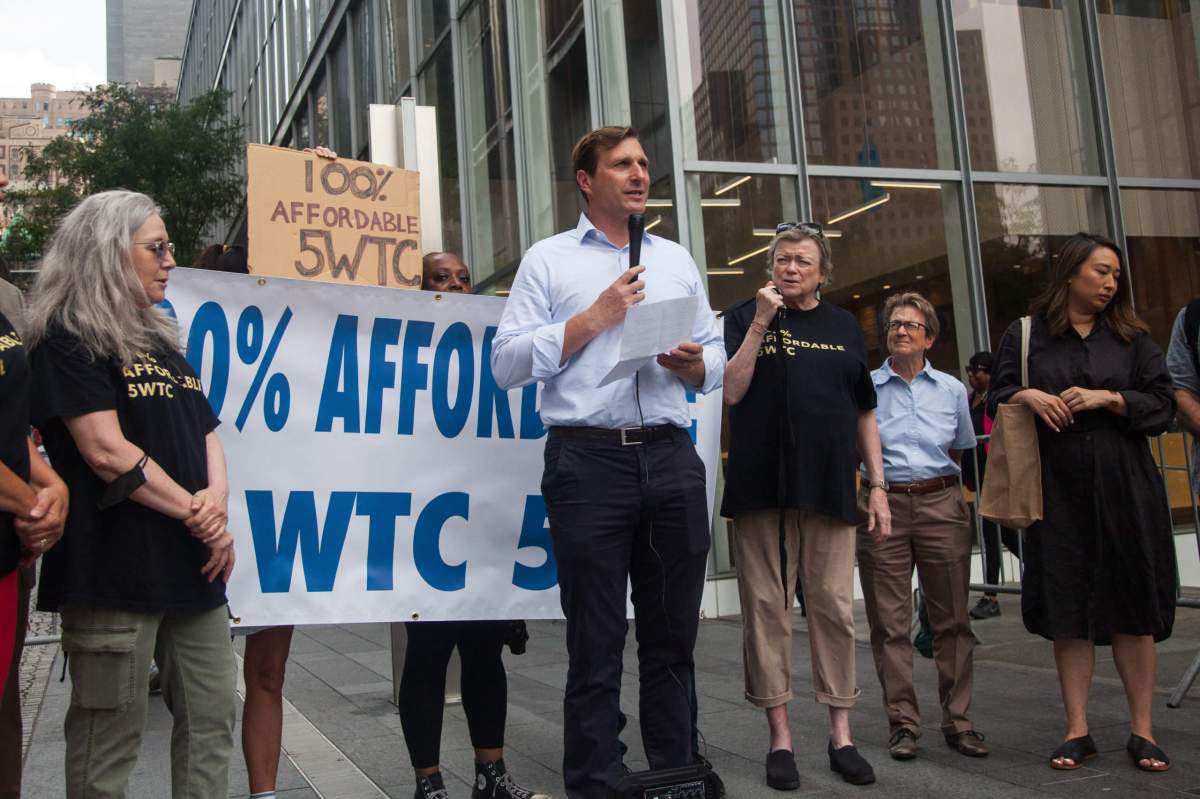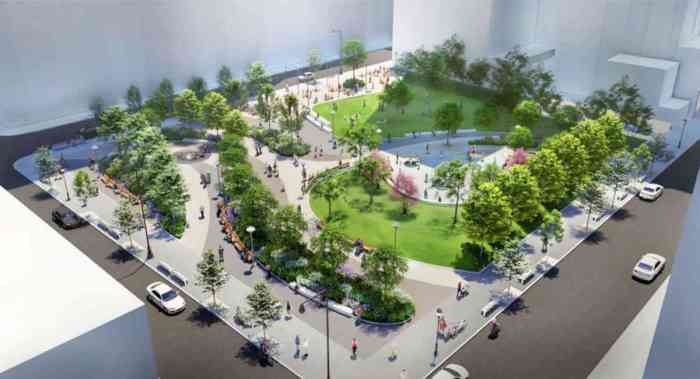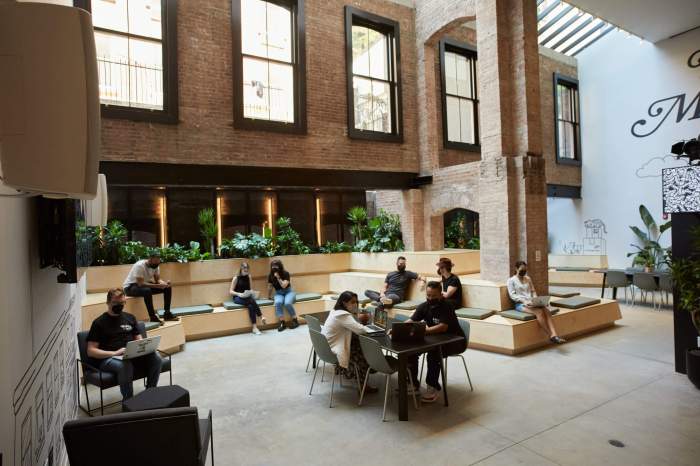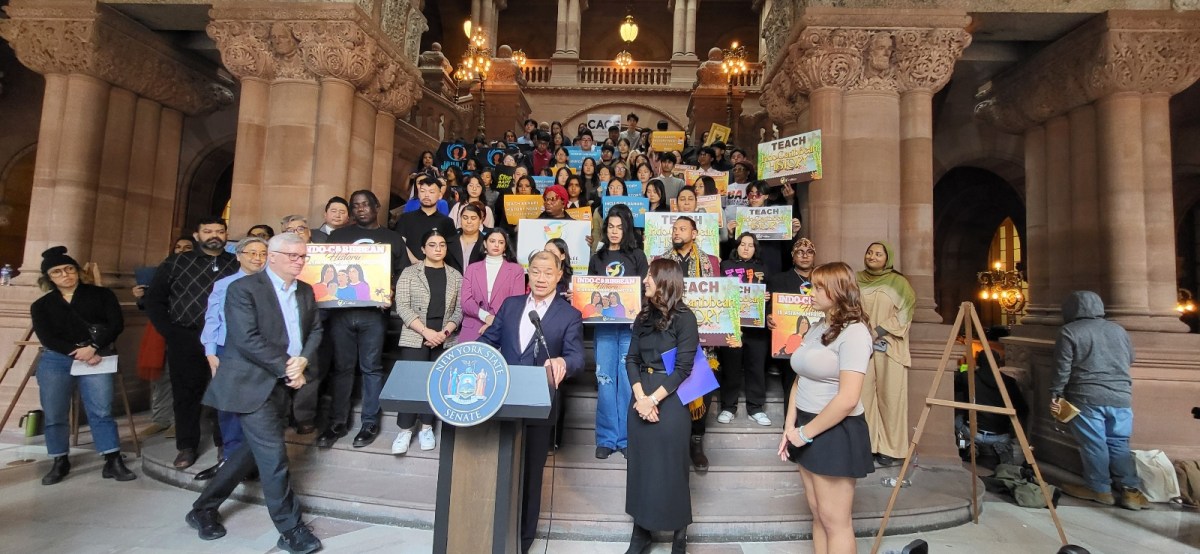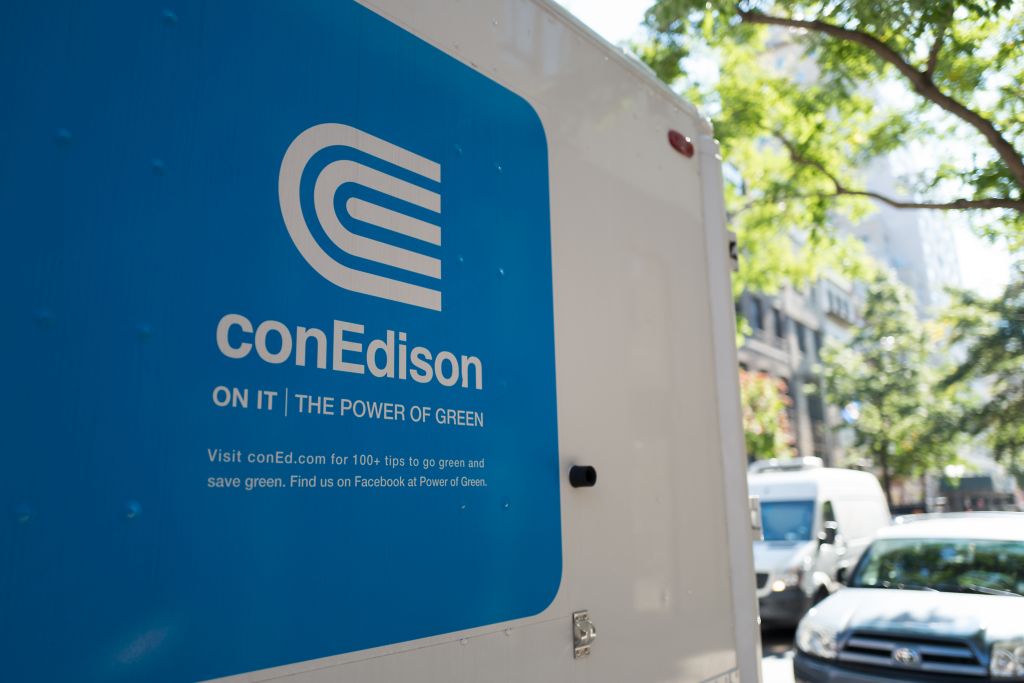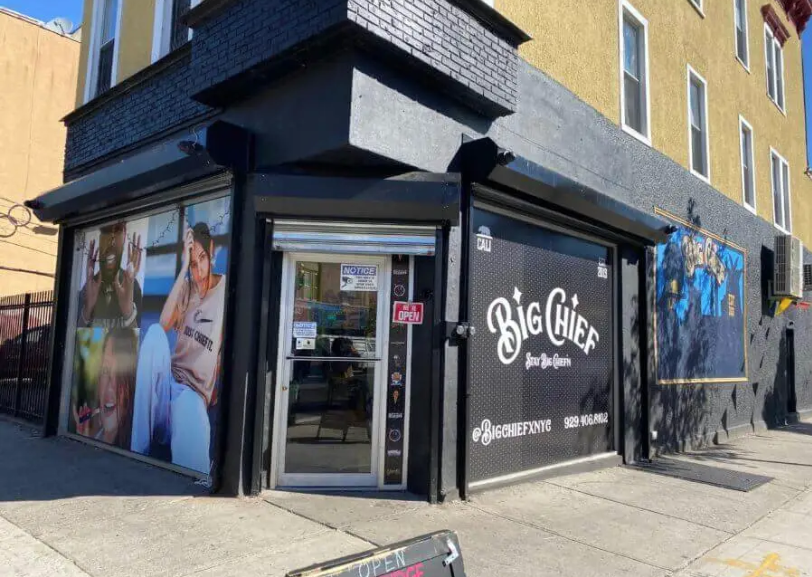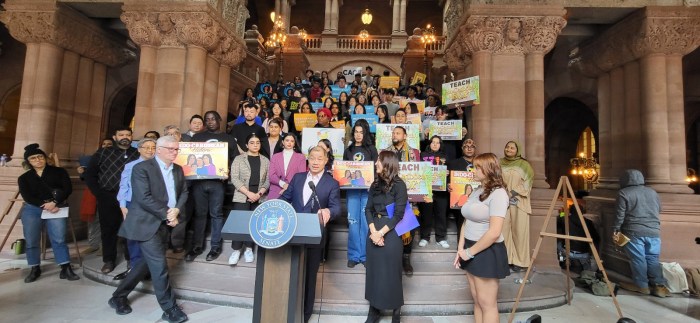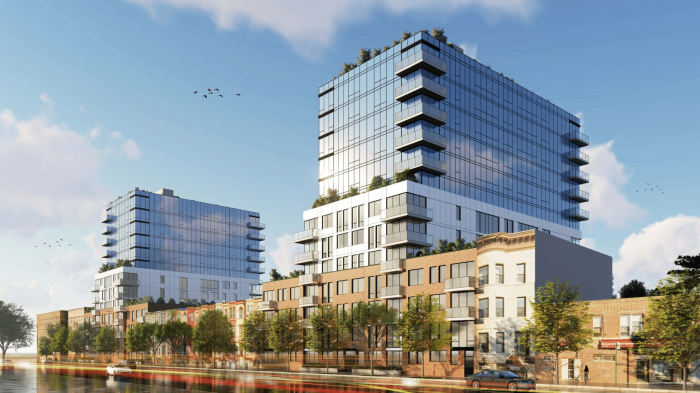A Lower Manhattan group demanding a proposed 1.3 million-square-foot tower on the empty publicly owned lot on the World Trade Center development site drew a crowd of supportive legislators on Tuesday.
The group, named the Coalition for a 100% Affordable 5WTC, held the rally ahead of a public comment period planned for Sept. 15 on the state’s plan to lease the 5WTC site to Brookfield Properties and Silverstein Properties, for the construction of a tower containing 1.345 million square feet of office, retail, housing and community space.
The advocates formed the coalition after the Lower Manhattan Development Corporation (LMDC), a subsidiary of Empire State Development Corporation, announced a year and a half ago that it was moving ahead with a proposed plan that would only yield affordable units in 25 percent of the residential construction.
“The idea of squandering public land and using massive public subsidies to fund a majority luxury development is actually very disturbing, especially when this project can and must be one that’s community-led and community serving,” said Assembly Member Yuh-Line Niou at the rally.
The event demonstrated wide-ranging political support, bringing together Democratic nominee for the 10th Congressional District Dan Goldman with Niou, his narrowly unsuccessful rival in last month’s primary for the seat.
It also drew local Council Member Chris Marte, state Senator Brian Kavanagh, Assembly Member Deborah Glick and Grace Lee, the Democratic nominee to succeed Niou as the area’s Assembly representative.
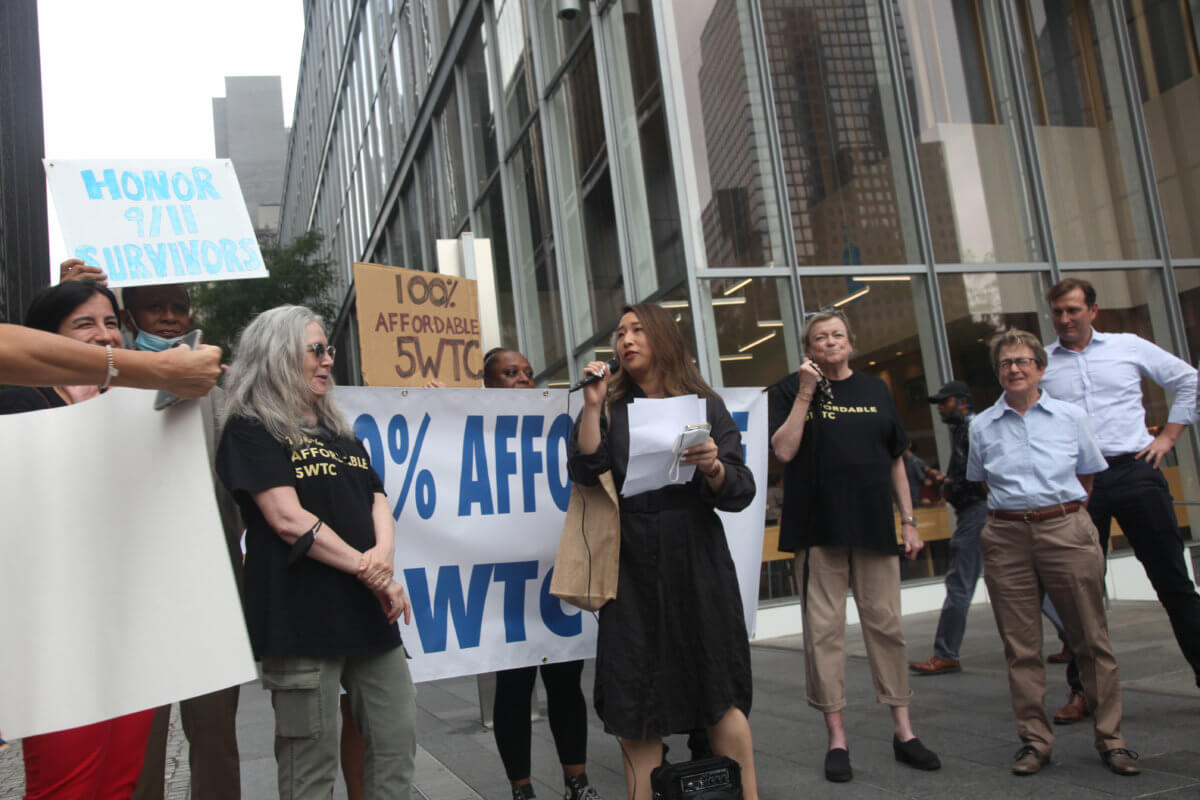
The rally organizers’ goal is to get the state to consider an alternative proposal that would involve 100% of its housing units to meet the city’s affordability criteria, but its members told us that they are open to drawing concessions out of the developers plan as it stands.
“If they wanna build a really expensive, tall building that’s fine. We just want it to be affordable. So, if the developers are willing to come to the table, that’s welcome. But to completely ignore the lack of affordable housing downtown is insulting particularly to the 9/11 community,” said Vittoria Fariello, a Democratic District leader and former state Senate candidate.
Another goal of the coalition is to ensure that the new affordable housing development on the site gives priority to 9/11 survivors.
“As this area has been redeveloped over the last two decades, real estate developers have made tons of money while many of the 9/11 survivors are being forced to move out of this area because of a lack of affordability,” said Goldman at the rally.
In order to challenge the narrative that the existing plan has maximized the amount of affordable housing that would yield a profit for the developers, the coalition commissioned a new study by Pratt Professor Jerrod Delaine that counters the agencies’ assumptions about the degree of subsidy needed to make the last World Trade Center site fully affordable as a residential building.
The study outlines two scenarios: one with an 80-story building that would include 1,620 units of affordable housing and another with a 60-story building that would include 810 units. The first option would require a $600 million level of subsidy and the second would require $154 million.
Kavanagh, the Senate Housing Committee Chair, who spoke in favor of the coalition’s proposal at the rally, said that the hopes to figure out what subsidies the state could use to push more affordable housing forward.
“We are having discussions about the numbers at this point, but additional affordability would require some additional subsidy from a source that has yet to be determined,” he said.



